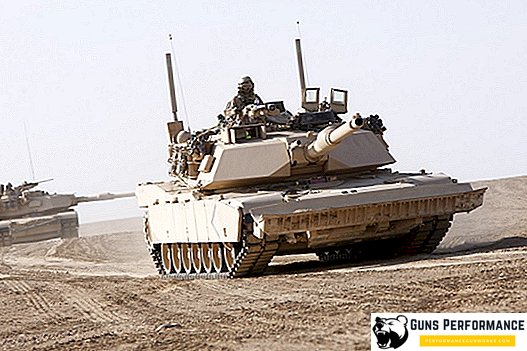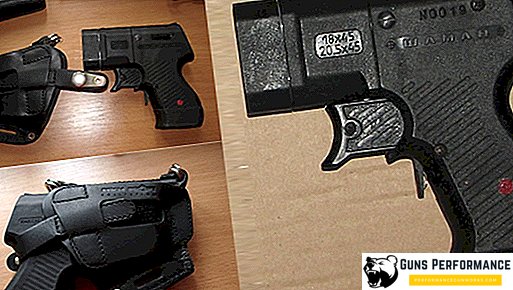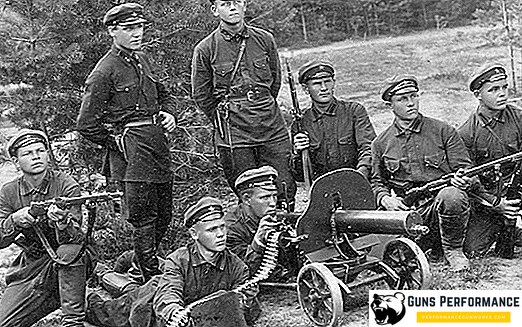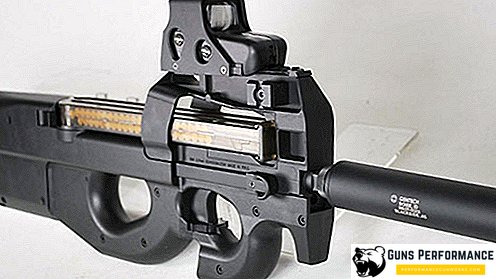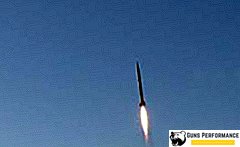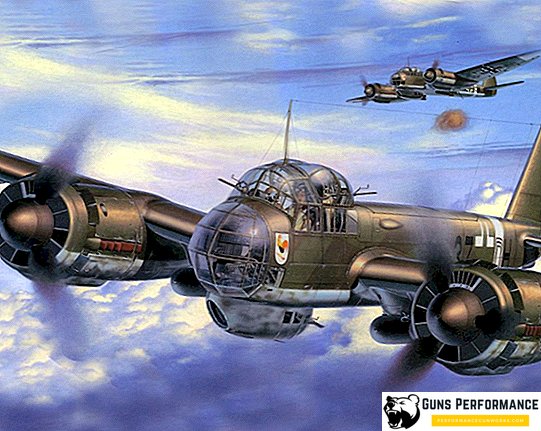
Junkers Ju 88 is a German twin-engine aircraft of the Second World War, which was originally designed as a heavy high-speed bomber. However, this machine was then adapted to perform various tasks. Therefore, the Junkers Ju 88 can be called the first truly multifunctional combat aircraft.
Junkers Ju 88 is often called one of the most successful machines of the Second World War, it is also possible to call this aircraft one of the most popular: in total, more than 15 thousand Ju 88 of various modifications were produced.
The plane first flew in 1937, mass production began in 1939 and continued until the very end of the war. During this period, about 3 thousand changes were made to the original design of the machine, six basic models of the aircraft and more than sixty of its modifications were created.
The Germans used the Junkers Ju 88 as a heavy bomber, reconnaissance aircraft, night fighter, torpedo bomber. The main operator of the car was the German Luftwaffe, but the Germans supplied the aircraft to their allies. Ju 88 participated in all major battles of the Second World War, starting with the Polish campaign.

The history of the creation of Junkers Ju 88
Already in the mid-1930s, the new leadership of Germany began to defiantly violate the conditions of the Versailles Treaty, which significantly limited the possibility of creating new types of weapons in the country. One of the priorities was the creation of modern military aviation - the Luftwaffe.
Ju 88 history began in 1935, after the Technical Department of the German Ministry of Aviation prepared a technical task for creating a new high-speed bomber capable of a speed of about 500 km / h.

For comparison: the existing at that time modification of the German Me-109 fighter could reach speeds of 468 km / h, and the best Soviet I-16 fighter - 454 km / h. So, having similar speed characteristics, the new bomber could feel almost completely safe.
In addition to speed, the specification for the new aircraft indicated: a normal bomb load of 500 kg, one MG-15 machine gun as a defensive weapon, a climb time of 7 km for 25 minutes.
The task was sent to the largest German aircraft manufacturers: Henschel, Focke-Wulf, Messerschmitt and Junkers. Focke-Wulf refused to participate in the project, Messerschmitt took the Bf 110 fighter as a basis, the rest of the participants began developing completely new machines.
The company "Junkers" attracted to work on the new aircraft talented designers Gassner and Evers, recently returned from the United States and had extensive experience creating such machines. Initially, work was carried out on the creation of two different prototypes: with spaced apart (Ju-85) and single-fin plumage (Ju-88). Their characteristics were very similar, but in the end, the leadership of the German Air Force stopped at the Ju-88.
After that, the company began assembling the first three Ju-88 experienced bombers. The first car took off on December 21, 1936. The third prototype of the aircraft, equipped with Jumo-211A engines, managed to reach a speed of 518 km / h, which exceeded the speed of most of the fighters of that time. German aviation chief Hermann Goring was delighted.

This success led to the conclusion of a new contract for the construction of a new batch of prototype aircraft, the rest of the companies participating in the competition dropped out of the fight.
In 1938, the Ministry of Aviation came to the conclusion that the new bomber must be adapted to dive bombing. It was also decided to strengthen the aircraft’s armament, change the glazing of its cabin, and increase the crew to four people.
In the same year, the Ju-88 was launched in the series.
Junkers Ju 88 aircraft series and modifications

Throughout the war, the Germans used the Ju-88 as a bomber, night fighter, reconnaissance aircraft and attack aircraft. Each of these methods of using the aircraft corresponded to its own series, which included numerous modifications. The most massive was the bomber series (A) Ju-88. Its production continued from 1938 to 1944. Over the years, a half dozen modifications of bomber were created, some of which were later converted into assault, reconnaissance or fighter variants of the Ju-88. Here is a list of aircraft bomber modifications:
- Ju-88A-0. An experimental series of aircraft, released in 1938, it consisted of 10 cars. Mainly used for testing and training of flight personnel.
- Ju-88A-1. The first production car equipped with Jumo-211B engines, wing span of 18.37 m.
- Ju-88A-2. Serial version, equipped with motors Jumo-211G.
- Ju-88A-3. Training aircraft.
- Ju-88A-4. Modification of a dive bomber, which can be called one of the most massive.
- Ju-88A-4 Trop. The aircraft for action in the tropics, not commercially manufactured.
- Ju-88A-5. Bomber that could perform intelligence functions. Equipped with motors Jumo-211B or Jumo-211G.
- Ju-88A-6. The plane on which the balloon override system was installed.
- Ju-88A-7. Bomber on the basis of modification A with Jumo-211H engines.
- Ju-88A-8. The aircraft is equipped with a system to overcome aerostatic barrier.
- Ju-88A-12. A-4 based training machine.
- Ju-88A-13. The aircraft, designed to directly support the ground forces. He had an additional reservation, sixteen machine guns for firing ahead.
- Ju-88A-14. Modification based on the A-4, this aircraft had improved equipment and a 20-mm cannon in the nose.
- Ju-88A-15. Three dive bomber dive bomber.
- Ju-88A-16. Training aircraft based on the A-14.
- Ju-88A-17. A torpedo plane could take on board two torpedoes LTF-5b.
Ju-88A perfectly showed themselves in the first months of the war, during the Polish and French campaigns. The battle for England, which the Luftwaffe conducted in mid-1940, was a real test for these cars. The Germans lost this battle. A subsequent analysis of the fights revealed the weaknesses of the Ju-88A.
The main advantage of the aircraft - speed - was no longer a guarantee of its invulnerability: even without Ju-88A bombs, it was not always possible to escape from British fighters. The power of defensive armament was clearly insufficient to guarantee the fight against opponents. Even more clearly, these shortcomings manifested themselves in subsequent German campaigns in Africa and Russia. Although, the pilots and the Luftwaffe leadership have repeatedly noted the fantastic reliability of the aircraft.
To increase the survivability of the aircraft, the German designers decided to improve its speed characteristics. In late 1942, work began on the creation of a new bomber with radial engines and more advanced aerodynamics. To increase its speed, the aircraft was tried to ease as much as possible: armor protection was partially dismantled, bomb load was reduced, the crew was reduced to three people. However, the speed gain was minimal. Despite this, work on aircraft with radial engines was continued: an index S was assigned to all manufactured machines. In total, the S-series produced five modifications, the last of which could reach speeds of up to 610 km / h.

Another problem that stood before the Wehrmacht "in full growth," was the need to destroy heavy enemy armored vehicles. The Germans first encountered the enemy’s heavy tanks during the French campaign for the first time. To destroy them from the air could only be a direct hit by a bomb, which was practically unrealistic for the accuracy of the bombing that existed at that time. The situation became even more aggravated after the start of the Eastern campaign and the “acquaintance” of the Nazis with the T-34 and KV.
Two options were considered: the use of unguided rockets or the installation of a powerful rapid-fire gun on an aircraft. A salvo fire system was installed on the Ju-88, consisting of six rocket projectiles in a drum set, but its effectiveness was insufficient.
With the artillery system, everything was also not easy: the problem was that Germany simply did not have an automatic aircraft gun of the desired caliber. The designers had to use what was in service with the ground forces.
In the summer of 1942, a modification of the Ju-88, armed with a 75-mm KwK-39 tank gun, appeared. During the tests, they found out that during the approach the gun could make two shots, when hit in a tank (the T-34 was used as a target), it was guaranteed to be destroyed, but the accuracy of shooting left much to be desired. During the war years, four modifications of Ju-88 attack aircraft were released:
- Ju-88P-1. Modification, equipped with a gun PaK-40 (75 mm).
- Ju-88P-2. Stormtrooper, with two 37 mm cannons. A small batch of aircraft was made in 1943.
- Ju-88P-3. Attack on the basis of the P-2.
- Ju-88P-4. Aircraft equipped with a 50mm BK-5 cannon. Its production began at the end of the war (1944), a total of 32 cars were manufactured. The P-4 tried to use as a night fighter, but without locators their efficiency was almost zero.

Aircraft Ju-88 Series D was mainly used as aerial reconnaissance aircraft. Usually they installed an additional fuel tank and several cameras. Serially produced five modifications.
Later, the T-series Ju-88 was created for reconnaissance. It consisted of three modifications, developed on the basis of Ju-88S-1.
Another area of modernization for the Ju-88 aircraft was work to increase its height and flight range. So in 1942, the ultra-long-range reconnaissance aircraft Ju-88H appeared with a range of up to 5,210 km. He became the ancestor of another series of the Ju-88 - N. In total, four modifications of this series were produced: two vehicles were super-long reconnaissance aircraft, and two more were heavy fighters.
Quite interesting is the “fighter” C and G series of the Ju-88 aircraft - these machines played a significant role in repelling allied aviation raids against Germany. Work on a heavy fighter based on the Ju-88 began in the first months of the war, after the leadership of the Third Reich realized the reality of this threat.
The first C-series aircraft appeared already in the middle of the 40th year, the G-series cars began mass production in 1943. Several modifications of the aircraft were used as night fighters, locators were installed on them (for example, Ju-88G6 or Ju-88C6).
The story of this legendary plane will be incomplete, if not to mention the project Mistel. Due to the lack of strategic aviation, the Germans decided to use the old remote-controlled Ju-88 to destroy enemy targets of particular importance. The bomber was used in tandem with the control plane, usually it was the Bf.109F-4 fighter jets. In the Ju-88, an explosive charge was loaded, and a special metal horn was installed on the nose to penetrate the concrete or armor protection of the target.

Description of construction Junkers Ju 88
Ju-88 is a low-profile, made according to the classical scheme, with a fuselage of monocoque type of oval cross section. It was formed by a set of frames and stringers, on which the working trim was attached.
The bomber was equipped with two engines (they differed in different series and modifications). The wing had two spars and a working aluminum alloy casing. For the nacelle located brake air grilles, which were used during the dive.

The fuselage was divided by partitions into three parts: the nasal, middle (it consisted of two parts) and tail. In the nose of the aircraft was located the cockpit, which could consist of four or three people. The nose of the aircraft was completely closed with a glazed lantern.
There was an additional gas tank (or bomb bay) in the front middle section, and bombs were suspended in the rear. For their discharge in this part there was a hatch with controlled doors.
The tail plumage is single-chin, all-metal with a working skin. The work of the horizontal tail was synchronized with the flaps.
Chassis - tricycle with rear rack. The main landing gear was cleaned in the engine nacelle with a turn of 90 degrees using a hydraulic system.
The aircraft’s fuel system consisted of tanks located in wings (425 liters each) and an additional tank that could be installed in the front middle section of the bomber.
The composition of the defensive armament of the aircraft included several machine guns.
On the Ju-88, two FuG 10 radio stations were installed — shortwave and longwave, as well as the Lorenz blind landing system.




